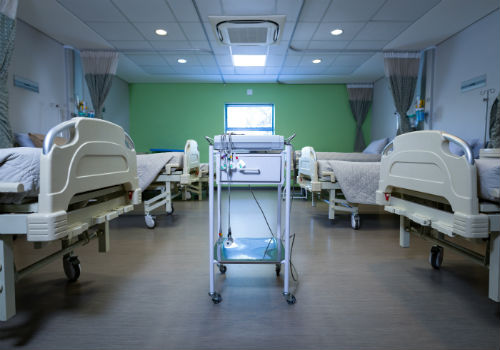
A medication cart with a lock is important in different forms of healthcare. A locked medical cart can ensure patient safety and enforce HIPAA regulations. Some patients do not want family members or friends to know what medication they are on. If their medications are out in view of people, that is a HIPAA violation.
It can be dangerous if a person accidentally takes medications that do not belong to them. Needles or scalpels can also be stored in a medication cart; this may cause injury to a child who accidentally accesses the cart.
Who benefits from medical carts with locks?
Large hospitals have many people walking throughout the hallways and into rooms all day. It can be challenging to keep an eye on carts filled with medication, to make sure no one is tampering with the drugs.
Pediatric centers greatly benefit from secure medical carts. Children are naturally curious, so it is imperative to keep medications and sharp objects safely away from their reach.
Another industry in healthcare that will benefit from medication carts with a lock is nursing homes, particularly memory care units. Alzheimer’s and dementia residents are very curious. The nursing home is also their home, so they may not think twice about going through a medication cart. If a resident were to take mediations that aren’t meant for them, they might get sick and need to be hospitalized.
Doctor’s offices, big or small, can also use locked mobile medical carts. In these offices, they are typically used for medical supplies needed daily.
Healthcare employees also benefit from locked medical carts. They are liable if someone gets in and steals medications or other equipment. It can also ensure employees double check their work to be sure medications are going to the correct patient.

Types of locks on medication carts
There are major ways you can secure your rolling medical supply carts. Some can be incorporated into your work badge while others require a code. It is important to pick the most secure way that works for your facility.
1. Deluxe Keyless Entry
This option provides high security; it requires a code to open any drawer or compartment through a keypad every time it is closed. Once a drawer on this medication cart is closed, it automatically locks.
You can program some medical carts to sound an alarm if the drawer is left open longer than a specific amount of time, or if someone has attempted to break into the cart.
These systems run on battery power and should have low battery alert features. They cannot be used on individual drawers; it locks or unlocks the whole unit at one time.
2. Wall locks and Drawer Locks
These are physical locks with keys. The wall lock allows you to lock the cart in place to a wall and needs a key to be removed. The drawer locks require manual keys to open them as well.
3. Proximity Reader
Proximity readers mount to your medical cart and require a badge to be opened. Most medical facilities will have this personalized as your nametag too, so you only have to keep one badge on hand.
Conclusion
Using a medication cart with a lock in any medical setting will help to keep you focused on your job, and not your supplies. Knowing that your supplies can’t be tampered with, stolen, misplaced, or misused would provide daily peace of mind. You also will create a system of accountability and trust with your employees. Talk with your nurses and doctors on staff to see if they think adding security will benefit their workflow.








